第51章
Counting was of course not permitted.It would have given a symbolic concept and no intuitive or immediate perception of the totality of the series.With counting we may of course compare together series of any length -- series whose beginnings have faded from our mind, and of whose totality we retain no sensible impression at all.To count a series of clicks is an altogether different thing from merely perceiving them as discontinuous.In the latter case we need only be conscious of the bits of empty duration between them ; in the former we must perform rapid acts of association between them and as many names of numbers.
Estel in Wundt's Philosophische Studien, II.
50.Mehner, ibid.II.571.In Dietze's experiments even numbers of strokes were better caught than odd ones, by the ear.The rapidity of their sequence had a great influence on the result.At more than 4 seconds apart it was impossible to perceive series of them as units in all (cf.Wundt, Physiol.Psych., II.214).They were simply counted as so many individual strokes.Below 0.21 to 0.11 second, according to the observer, judgment again became confused.It was found that the rate of succession most favorable for grasping long series was when the strokes were sounded at intervals of from 0.3" to 0.18" apart.Series of 4, 6, 8, 16 were more easily identified than series of 10, 12, 14, 18.The latter could hardly be clearly grasped at all.Among odd numbers, 3, 5, 7 were the series easiest caught ; next, 9, 15; hardest of all, 11 and 13; and 17 was impossible to apprehend.
The exact interval of the sparks was 0.00205".
The doubleness of their snap was usually replaced by a single-seeming sound when it fell to 0.00198", the sound becoming louder when the sparks seemed simultaneous.The difference between these two intervals is only 7/100000 of a second; and, as Exner remarks, our ear and brain must be wonderfully efficient organs to get distinct feelings from so slight an objective difference as this.See Pflüger's Archiv, Bd.XI.
Ibid.p.407.When the sparks fell so close together that their irradiation-circles overlapped, they appeared like one spark moving from the position of the first to that of the second; and they might then follow each other as close as 0.015" without the direction of the movement ceasing to be clear.When one spark fell on the centre, the other on the margin, of the retina, the time-interval for successive apprehension had to be raised to 0.076".
Hall and Jastrow: Studies of Rhythm.Mind, XI.
58.
Nevertheless, multitudinous impressions may be felt as discontinuous, though separated by excessively minute intervals of time.Grünhagen says (Pflüger's Archiv, VI.175) that 10,000
electric shocks a second are felt as interrupted, by the tongue (!).Von Wittich ( ibid.II.329), that between 1000 and 2000 strokes a second are felt as discrete by the finger.W.Preyer, on the other hand (Die Grenzen des Empfindungsvermögens, etc., 1868, p.15), makes contacts appear continuous to the finger when 36.8 of them follow in a second.Similarly, Mach (Wiener Sitzgsb., LI.2, 142) gives about 36.Lalanne (Comptes Rendus, LXXXII.p.1314) found summation of finger-contacts after 22 repetitions in a second.Such discrepant figures are of doubtful worth.On the retina 20 to 30 impressions a second at the very utmost can be felt as discrete when they fall on the same spot.The ear, which begins to fuse stimuli together into a musical tone when they follow at the rate of a little over 30 a second, can still feel 132 of them a second as discontinuous when they take the shape of 'beats' (Helmholtz, Tonempfindungen, 3d ed.p.270).
Pflüger's Archiv, XI.428.Also in Herrmann's Hdbh.d.Physiol., 2 Bd., I.Thl.pp.260-262.
Pflüger's Archiv, VII.639.Tigerstedt (Bihang till Kongl.Svenska Vetenskaps-Akad.Handl., Bd.8, Häfte 2, Stockholm, 1884) revises Exner's figures, and shows that his conclusions are exaggerated.
According to Tigerstedt, two observers almost always rightly appreciated 0.05" or 0.06" of reaction-time difference.Half the time they did it rightly when the difference sank to 0.03", though from 0.03" and 0.06" differences were often not noticed at all.Buccola found (Le Legge del Tempo nei Fenomeni del Pensiero, Milano, 1883, p.371) that, after much practice in making rapid reactions upon a signal, he estimated directly, in figures, his own reaction-time, in 10 experiments, with an error of from 0.010" to 0.018";
in 6, with one of 0.005" to 0.009"; in one, with one of 0.002"; and in 3, with one of 0.003".
"Mind, XI.61 (1886).
Mach, Wiener Sitzungsb., LI.2.133 (1865); Estel, loc.cit.p.65; Mehner, loc.cit.p.586; Buccola, op.cit.p 378.Fechner labors to prove that his law is only overlaid by other interfering laws in the figures recorded by these experimenters;
but his case seems to me to be one of desperate infatuation with a hobby.
(See Wundt's Philosophische Studien, III.1.)